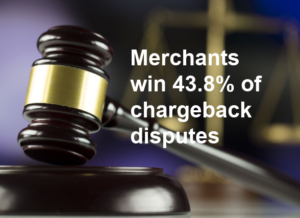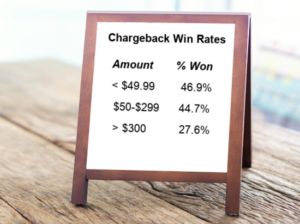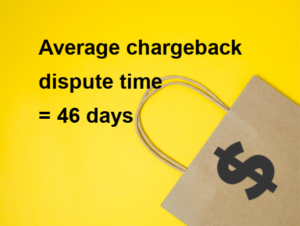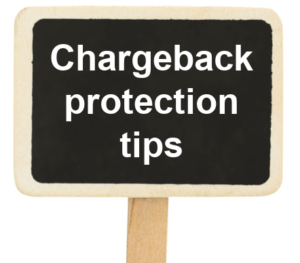By Ariel Chen, CEO, Chargeflow
Chargebacks are an issue. Mastercard recently announced that the estimated US chargeback volume will reach 146 million in 2026. That amounts to over $15.3 billion in value. Those billions lost in revenue are a direct threat to merchants.
But how should you protect your business? Chargebacks are complex. And every business is unique—what works for one company might not work for you.
That’s why Chargeflow invests in the annual State of Chargebacks 2024 report. Data unveils patterns and trends. Information leads to insights—real visibility into the nature of chargebacks. You can use that in-depth view to customize your strategy. If you know what is working and what needs improvement, it is far easier to make effective changes.
2024 survey findings revealed several interesting takeaways for merchants:
The growing problem of friendly fraud
First key insight: Merchants should focus on friendly fraud.

We found that friendly fraud constitutes 79.03% of chargebacks. That amounts to approximately eight out of ten cases. The greatest impact from chargebacks is not due to fraudsters—it’s coming from your customers.
Unfortunately, friendly fraud is hard to identify. Some customers are honest and want to protect themselves from problems (eg, billing errors and failed deliveries). Others engage in mistaken friendly fraud, like when they use a dispute because they forgot about a credit card purchase. And yet others abuse the chargeback process with illegitimate intent, trying to recoup lost money when dissatisfied or feeling buyer’s remorse.
Luckily, there are numerous ways to protect yourself. Good customer service, automated chargeback tools, and readable billing descriptors are known best practices. Investments in these types of preventative solutions are worth the investment. First-party abuse of a card accounts for the lion’s share of chargebacks—focus most of your resources on friendly fraud prevention.
Finding ways to improve win rates
Second key insight: Merchants can improve win rates.

Merchants only successfully dispute 9.27% of disputes due to genuine fraud. Of course, instances of actual fraud will always have a low win rate. Customers do not need to pay for the actions of criminals. The point here is that you should only fight cases of true fraud that you undeniably can win (as most cases of actual fraud will rightly protect consumers for the good of the payment industry).
However, when it comes to friendly fraud, merchants successfully dispute and win 43.82% of cases. Yes, that is a positive figure. But it still means that 56% of cases lead to revenue losses. That is altogether too high. Merchants are leaving money on the table, losing far too many winnable cases. False claims should not be considered a valid business expense.
This also means that the answer to friendly fraud is not solely prevention. It also requires effort post-dispute. Good customer service, compelling evidence, and automated dispute tools are viable options. Each of these tools can help you win friendly fraud cases when they occur. And that recovers revenues. Post-dispute solutions should be part of your answer to friendly fraud as well.
Knowing when to fight
Third key insight: Pick your battles.

Win rates by transaction amount show some interesting trends. Namely, the higher the transaction value, the lower the win rate.
Low-value transactions ($0-$49.99) earned a relatively high win rate, with 46.85% for products valued between $0 to $29.99 and 45.42% for products costing $30 to $49.99. This suggests merchants are not fighting cases if the product has a low sale value. Or, these cases are not that complex and are easier to resolve.
As for mid-range transactions ($50-$299.99), win rates decrease gradually. This helps indicate that complexity increases as the transaction value rises. Rates dropped to 44.74% for $50 to $99.99 and 37.75% for $100 to $299.99.
Lastly, high-value transactions ($300+) only earned a win rate of just 27.64%. These large sums are likely to involve complex dispute scenarios.
Transaction value data highlights the need for targeted strategies. Select the cases you know that are both winnable and offer a good return on investment. For those with tight margins and small dispute teams, focus your resources on improving win rates on transactions above $100. Automation is probably the best low-cost answer for those who want to deal with low-value disputes (as they are less complex).
Preparing for peak fraud periods
Fourth key insight: Prepare for seasonal trends and business patterns.

Analysis of monthly chargeback distribution showed clear peak chargeback periods. The summer and Christmas times show higher activity. Which makes sense as consumers gear up for more active shopping during these seasons.
Part of the issue involves resolution times. The average dispute time is 46 days, with some chargeback cycles needing 100 days to resolve. But the longer the process, the more costly for you and the more damage to the business cash flow.
That data emphasizes the benefit of customer-centric policies. The resolution time for a simple customer inquiry took an average of 21 days. However, failed resolutions for chargebacks took 38 days. And positive chargeback outcomes took even more time, 50 days. That is a lot of time and effort. Deflecting chargebacks is the ideal solution before the disputes develop into expensive and damaging issues.
Luckily, you can prepare according to peak chargeback periods. In these busy seasons, adjust as much as possible with customer-friendly policies (eg, holiday refunds.) Deflection is better than recovery.
What you can do to protect your business

Armed with these four key chargeback insights, what are the implications for you and your business? Here are four takeaways:
- Allocate your resources: The data shows that you should be selective in where you invest your time and effort. Focus on friendly fraud, prepare for peak fraud periods, and fight false claims that offer a positive ROI.
- Automate: Allow digital solutions to do the heavy lifting. Reserve your human expertise and knowledge for complex and high-value cases.
- Prioritize prevention but fight when needed: Prevention is better than winning back revenues. Invest more in limiting friendly fraud so it never happens rather than resolving case disputes. That said, if there is no other option, false claims are winnable and worthy of fighting.
- Focus on the customer experience: It is the cardholder (ie, your customer) who engages in friendly fraud, either by mistake or on purpose. Customer-centric policies and good customer service are always the ideal prevention option.
Want to know more? Download Chargeflow’s State of Chargebacks 2024 Report for more details and insights.
About the Author

Ariel Chen is the CEO and Co-Founder of Chargeflow. Ariel Chen, an Israeli-American entrepreneur, embarked on his e-commerce journey at just 16 years old. After serving as a Technology Unit Chief in the IDF, he transitioned to fintech in Florida, overseeing business operations. Together with his brother Avia, Ariel transformed bootstrapped projects into eight-figure Shopify powerhouses, serving over half a million global customers. Through Chargeflow, the Chen brothers now aim to reshape how online businesses handle fraud and chargebacks.
Recent PaymentsNEXT news:
Visa, Mastercard settle long-running antitrust lawsuit over US merchant swipe fees

